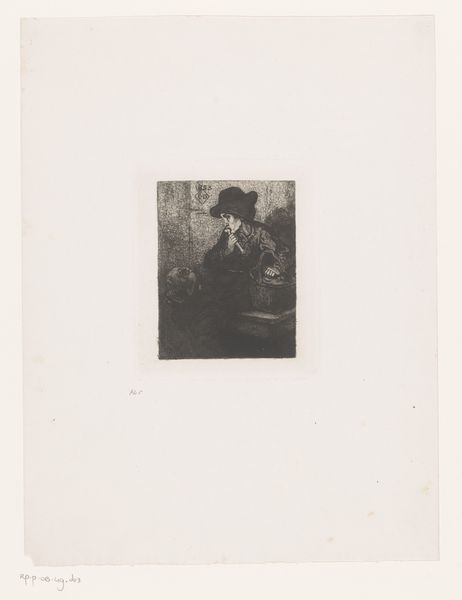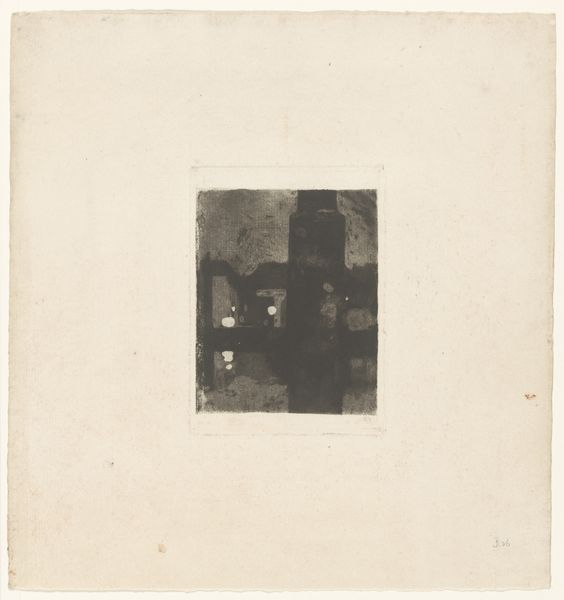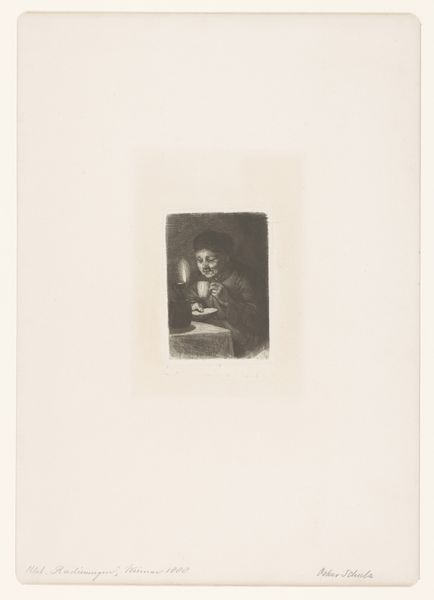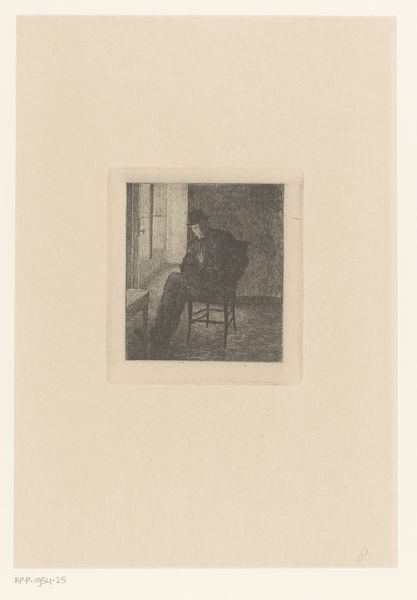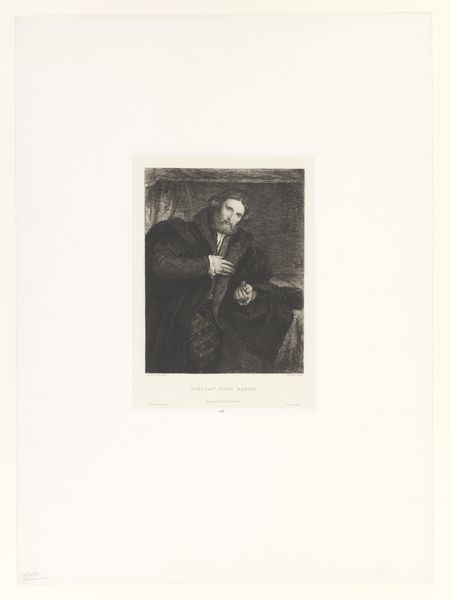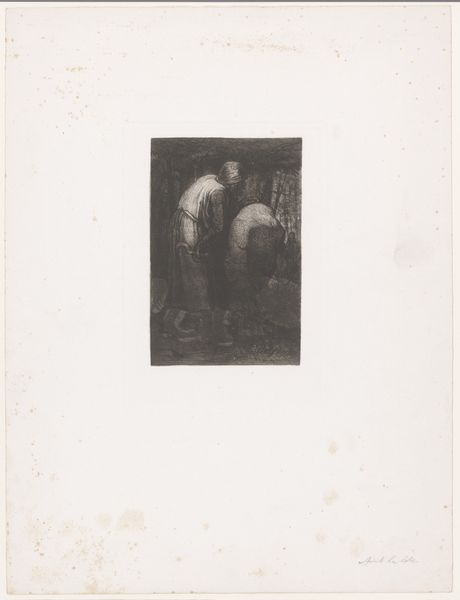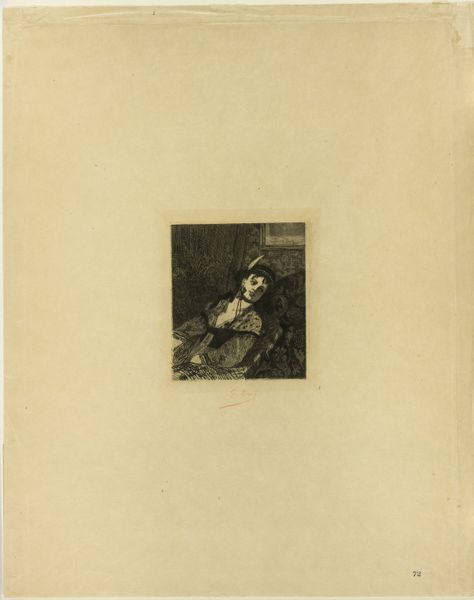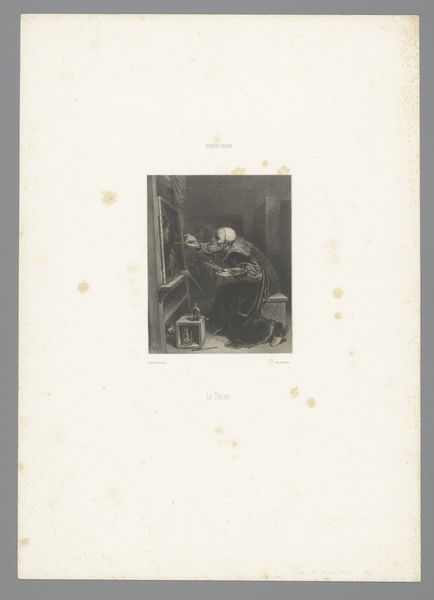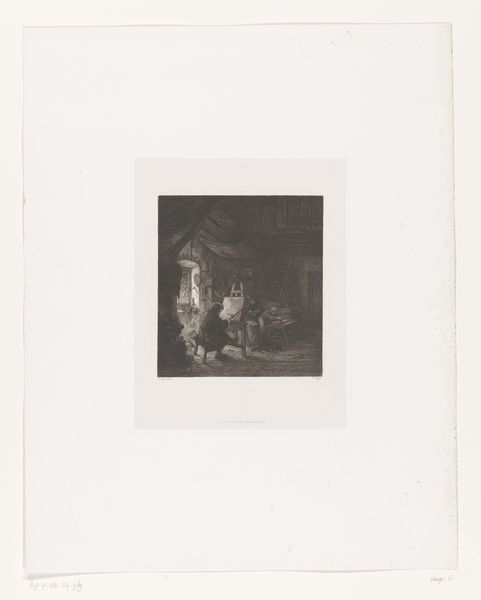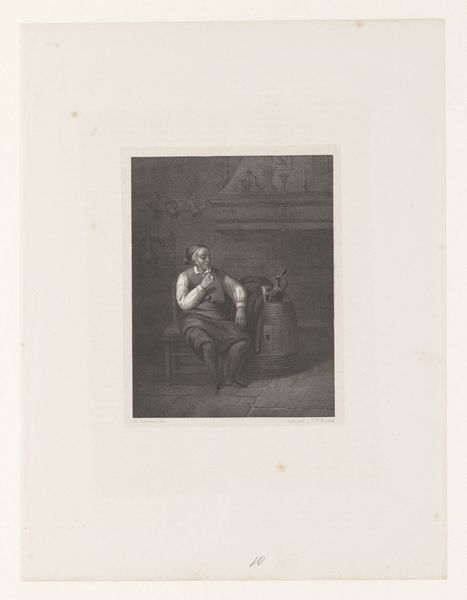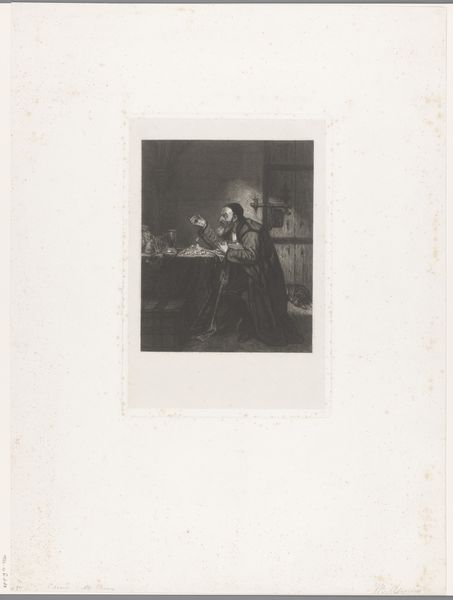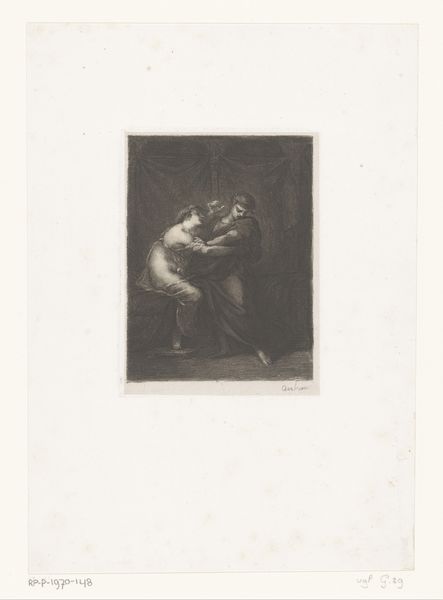
Dimensions: height 563 mm, width 391 mm
Copyright: Rijks Museum: Open Domain
Editor: Here we have "Slapende wachter" or "Sleeping Guard" by Adolphe Mouilleron, dating from somewhere between 1848 and 1862. It’s a graphite drawing, almost print-like in its detail. There’s a somber feeling about this lone figure in armour. What strikes you about this piece? Curator: Immediately, I think of the loaded symbolism of a sleeping guard. Consider the context: the mid-19th century. Revolution and upheaval are everywhere. This isn’t just a portrait; it's a statement on the failures of those in power. He’s literally asleep at the switch, a commentary, perhaps, on the ineffectiveness of traditional authority, clad in antiquated armor, in a rapidly changing world. Editor: So, it's less about the individual and more about what they represent? Curator: Precisely! Think about how Romanticism, as a movement, often critiqued established orders. The figure, while seemingly vulnerable, is also representative of the established powers failing in their duties. The deep shadows surrounding him hint at instability, a world on the precipice. Who is this guard protecting, if he can't even stay awake? Editor: It is interesting how relevant it is to the sociopolitical issues happening then. Does the style -- romanticism -- impact this interpretation at all? Curator: Absolutely. Romanticism was deeply invested in ideas of national identity and revolution. By employing the aesthetics of Romanticism to depict this "sleeping guard," Mouilleron invites us to contemplate these revolutionary anxieties that dominated mid-19th-century Europe. Editor: I see it now! Thank you, I hadn't considered those political undercurrents. It completely shifts how I view the work. Curator: Indeed. By examining art through the lens of its time, we can unlock profound insights into our history and society.
Comments
No comments
Be the first to comment and join the conversation on the ultimate creative platform.
